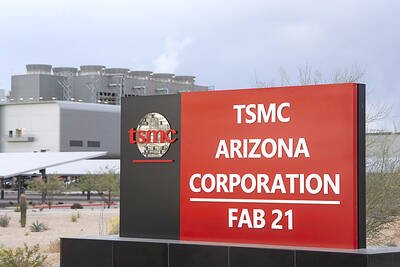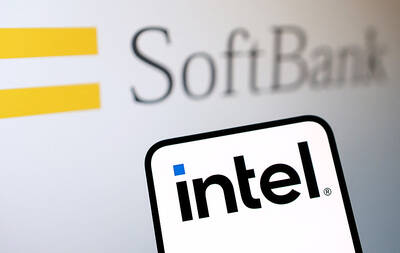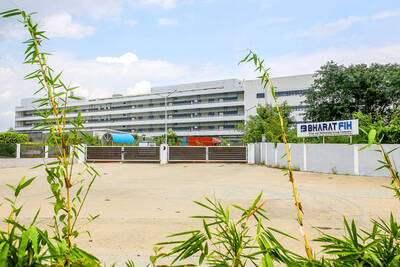Advanced Micro Devices Inc (AMD) chief executive officer Lisa Su on Thursday said the company would reach revenue growth of 20 percent over the next four years and become more profitable as it reaches that goal.
Gross margin, or the percentage of sales remaining after deducting the cost of production, would rise to more than 50 percent, she said at an investor event at the chipmaker’s Santa Clara, California, headquarters.
AMD maintained its near-term revenue forecast of US$1.8 billion, plus or minus US$50 million, for the first three months of its fiscal year.
While results might be at the lower end of that range and demand from consumers in China has weakened, orders elsewhere are in line with expectations, helped by demand for data center chips, Su said.
The company also stuck by its prediction that sales would increase 28 percent to 30 percent this year.
Su is talking to investors who want revenue growth and earnings to justify the faith they have shown by bidding up AMD’s stock since she took the top job in 2015.
During her time in charge, AMD has taken on the world’s biggest chipmaker, Intel Corp, in its main markets armed with only a fraction of the resources.
Now, like other chipmakers, it is confronting disruptions to supply and demand caused by the COVID-19 outbreak.
“We’re a much stronger company than we were five years ago,” Su said. “The opportunities are larger.”
AMD’s stock rose 6 percent in extended trading. The shares, which traded at US$2.87 at the end of 2015, closed at US$48.11 on Thursday in New York and have doubled in the past 12 months. AMD was the best performer on the S&P 500 Index last year.
The computer industry’s supply chain is rapidly recovering to typical levels of activity, Su said, adding that AMD’s suppliers in China, Taiwan and Malaysia are almost back to full output.
Other technology companies have scrapped guidance or lowered forecasts for the current period.
AMD has targeted double-digit market share in servers by the middle of this year, trying to reclaim a meaningful position in that lucrative market after dropping to less than 1 percent.
Server computers are the backbone of corporate networks and the giant data centers that run the Internet. Chips that power them can cost more than US$10,000 each.
While manufacturing difficulties at Intel have made it vulnerable to a reinvigorated range of offerings from AMD, any shifts in the market have yet to cause the bigger company discomfort.
Intel’s server chip unit grew 19 percent in the fourth quarter and revenue from cloud-service providers, which offer computing power and storage through the Web, surged 48 percent. Its data center business earns more revenue in a quarter than AMD generates in year.
Both companies have benefited from strong demand for personal computers.
Global PC shipments rose 2.3 percent in the fourth quarter from a year earlier as companies upgraded to a new version of Microsoft Corp’s Windows operating system, research firm Gartner Inc said.
AMD has an even greater ability to cash in on the trend as it is also the second-largest maker of chips used in computer graphics cards.

Taiwan Semiconductor Manufacturing Co (TSMC, 台積電), the world’s biggest contract chipmaker, booked its first-ever profit from its Arizona subsidiary in the first half of this year, four years after operations began, a company financial statement showed. Wholly owned by TSMC, the Arizona unit contributed NT$4.52 billion (US$150.1 million) in net profit, compared with a loss of NT$4.34 billion a year earlier, the statement showed. The company attributed the turnaround to strong market demand and high factory utilization. The Arizona unit counts Apple Inc, Nvidia Corp and Advanced Micro Devices Inc among its major customers. The firm’s first fab in Arizona began high-volume production

VOTE OF CONFIDENCE: The Japanese company is adding Intel to an investment portfolio that includes artificial intelligence linchpins Nvidia Corp and TSMC Softbank Group Corp agreed to buy US$2 billion of Intel Corp stock, a surprise deal to shore up a struggling US name while boosting its own chip ambitions. The Japanese company, which is adding Intel to an investment portfolio that includes artificial intelligence (AI) linchpins Nvidia Corp and Taiwan Semiconductor Manufacturing Co (TSMC, 台積電), is to pay US$23 a share — a small discount to Intel’s last close. Shares of the US chipmaker, which would issue new stock to Softbank, surged more than 5 percent in after-hours trading. Softbank’s stock fell as much as 5.4 percent on Tuesday in Tokyo, its

The prices of gasoline and diesel at domestic fuel stations are to rise NT$0.1 and NT$0.4 per liter this week respectively, after international crude oil prices rose last week, CPC Corp, Taiwan (台灣中油) and Formosa Petrochemical Corp (台塑石化) announced yesterday. Effective today, gasoline prices at CPC and Formosa stations are to rise to NT$27.3, NT$28.8 and NT$30.8 per liter for 92, 95 and 98-octane unleaded gasoline respectively, the companies said in separate statements. The price of premium diesel is to rise to NT$26.2 per liter at CPC stations and NT$26 at Formosa pumps, they said. The announcements came after international crude oil prices

SETBACK: Apple’s India iPhone push has been disrupted after Foxconn recalled hundreds of Chinese engineers, amid Beijing’s attempts to curb tech transfers Apple Inc assembly partner Hon Hai Precision Industry Co (鴻海精密), also known internationally as Foxconn Technology Group (富士康科技集團), has recalled about 300 Chinese engineers from a factory in India, the latest setback for the iPhone maker’s push to rapidly expand in the country. The extraction of Chinese workers from the factory of Yuzhan Technology (India) Private Ltd, a Hon Hai component unit, in southern Tamil Nadu state, is the second such move in a few months. The company has started flying in Taiwanese engineers to replace staff leaving, people familiar with the matter said, asking not to be named, as the